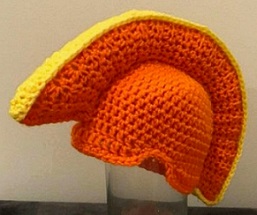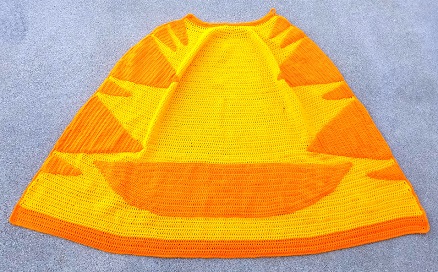Subject: ali'i chief
Culture: Hawaiian
Setting: unification of Hawaii, mid-18th-early 19thc
Object: costume
Helmet
* Paraísos perdidos 2007 p31
"Denominados Mahiole, los cascos formaban parte del atuendo de los guerreros y eran símbolo de estatus y prestigio. El carácter sagrado de la cabeza dio lugar al desarrollo de formas muy elaboradas. Todos los cascos se realizaban a partir de un entramado de fibra vegetal llamada 'ie 'ie (Freycinetia arborea), de la familia del pandano, que estaba sujeto a las técnicas de elaboración de cada artesano. Sobre esta malla se colocaban normalmente las plumas de la cola del Phaeton lepturus, aunque usaban las de varias especies. Estos cascos pueden considerarse como una creación local de las islas Hawai ya que no aparecen cascos similares en el resto de la Polinesia."
* Meyer 1995 v2 p579 f668
"Great warriors and chiefs wore woven-cane helmets that are surprisingly Roman in appearance. The long curved crest is related to the shape of the lei niho palaoa necklace, and possibly to the human tongue. The significance of the crest is as yet unexplained, although most god figures and sacred representations also feature crested coifs."
* Kaeppler 2008 p120
"Feathered helmets, mahiole, were sometimes worn with the cloaks. Made of a basketry foundation, they were of two main styles -- one with a wide low crest, the whole of the helmet being covered with long, round, stiffened fibre strips, to which feathers were attached; the second with a high narrow crest that was covered with a netting to which feathers were attached. Feathers were red, black, green, and yellow."
Cape
* Paraísos perdidos 2007 p30
"Estas capas cortas estaban realizadas sobre un armazón de fibra vegetal trenzada, fibra de olona (Touchardia latifolia) con el llamado 'nudo de pescadores.' En él se iban disponiendo las plumas colocando en primer lugar las rojas, color sagrado asociado a los dioses, y superponiendo a continuación las verdes, amarillas y negras. Esta en concreto era de uso femenino, pero la mayoría y sobre todo las grandes capas, eran de uso masculino en los combates y en las ceremonias."
* Kane 1997 p46
"[F]eathered capes and helmets were 'battle apparel.' The cape might be worn over the shoulders, but in battle it was pulled around the left side of the body and held forward with the left hand to snag a thrust from a dagger or the point of a thrown spear. In this position the right arm was exposed and free to wield a weapon. Feathers were black, white, red, yellow, green and the long rust-red and black feathers of the fighting cock. These were tied over a light netting of cord in a great variety of designs. In battle, the brilliant capes helped warriors identify and rally to their chiefs. Helmets made of strong, light weight basketry protected the head from the impact of stones shot from slings."
* Kaeppler 2008 p122-123
"Feathered cloaks and helmets were made for specific individuals. The cloaks often began as short capes, probably for wear on a specific occasion, and could be ritually renewed by lengthening or adding important feathers as an overlay. This is comparable to the ritual of renewed temples (heiau), which were rebuilt or refurbished for important occasions. The cloaks and helmets had touched the sacred bodies of the chiefs and carried their sacred power (mana). They were dangerous for others to wear or even touch.
* Meyer 1990 v2 p574 f663
">>The Joy Cloak.<< The kings of the Hawaiian Islands wore distinctive semicircular capes and cloaks made of red and yellow feathers."
Tattooing
* D'Alleva 2010 p112-114
"Many Polynesian cultures expressed this concern with the body, status, and mana by means of tattooing, which wrapped the body in protective images and served as a marker of social status and gender identity. In Hawaii, before the decline of tattooing in the mid-nineteenth century, high-ranking men were tattooed on their faces, chests, legs, and hands. The motifs included zigzags, stepped triangles, and chevrons that made reference to spines and to genealogy. When these high-ranking men went into battle, their feather cloaks and helmets protected their backs and heads, and their tattoos protected their faces and chests."

